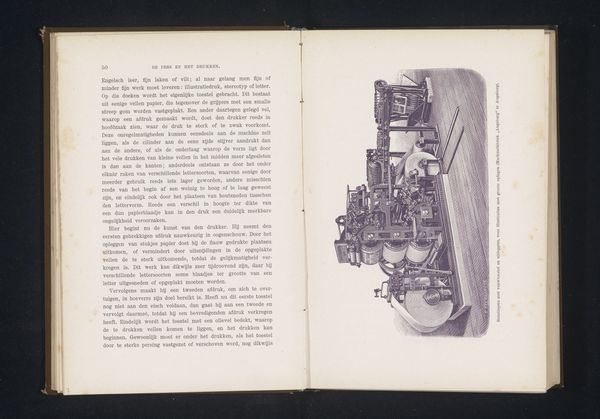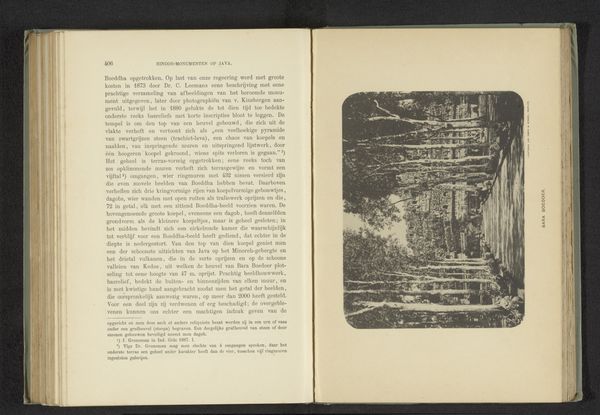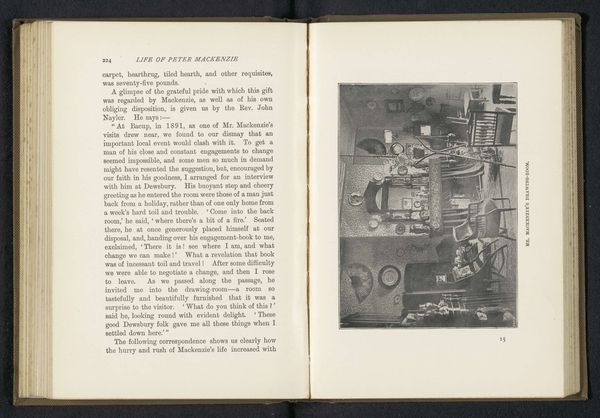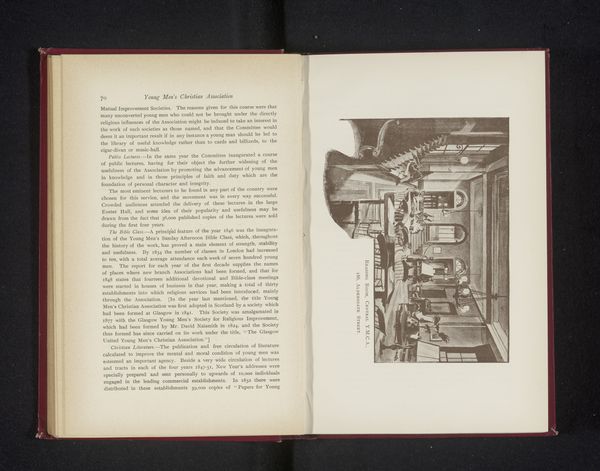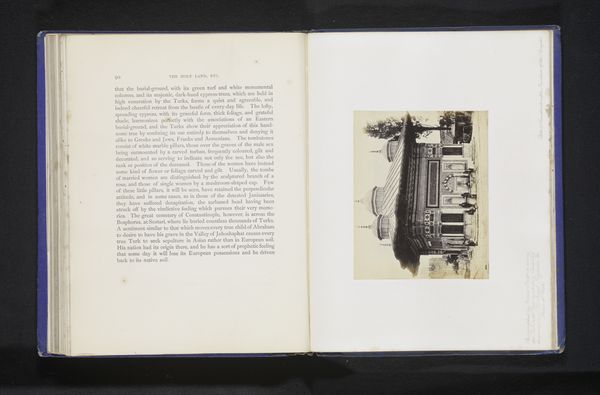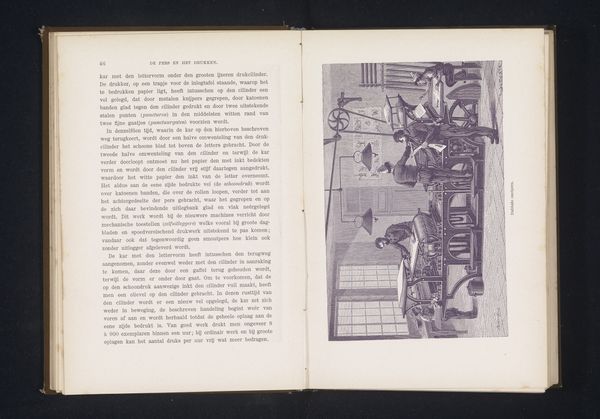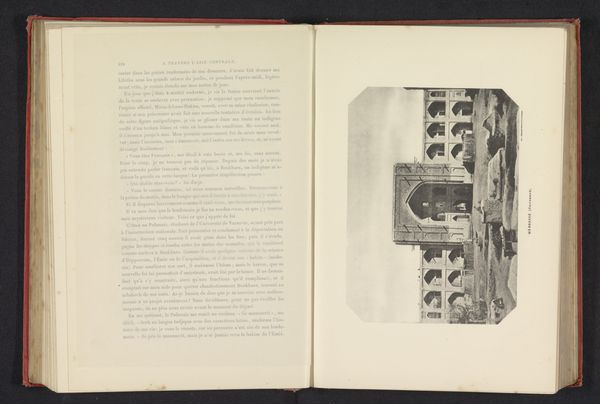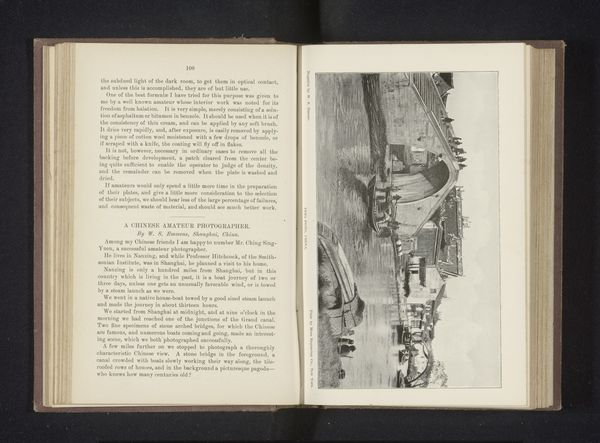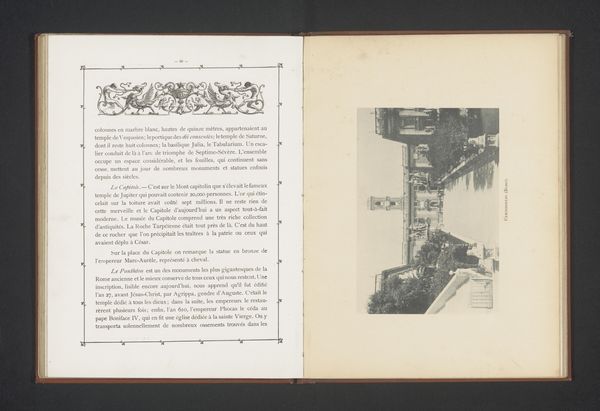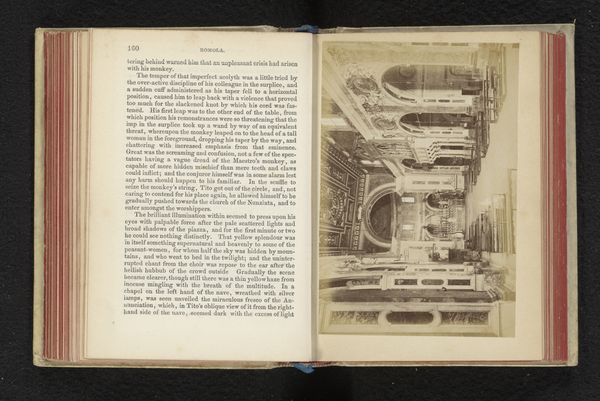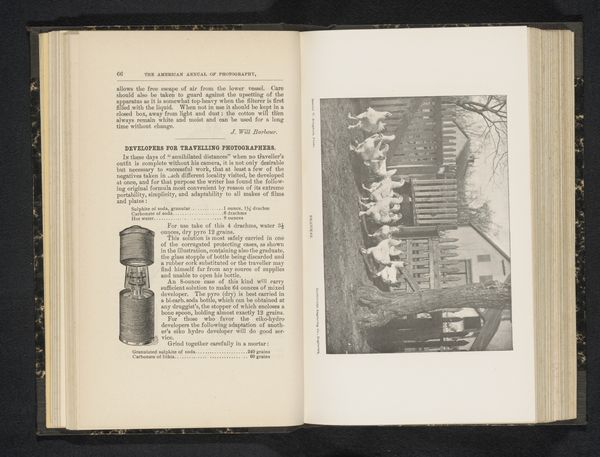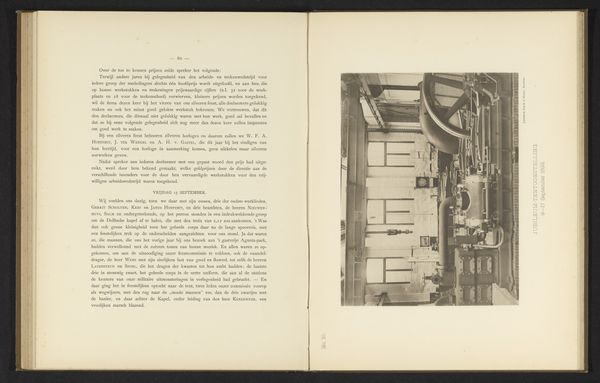
Reproductie van een gravure van een rotatiepers door Richard Brend'amour before 1892
0:00
0:00
print, textile, engraving
# print
#
textile
#
history-painting
#
engraving
Dimensions: height 109 mm, width 173 mm
Copyright: Rijks Museum: Open Domain
Curator: So, tell me what you see here. Editor: We're looking at "Reproductie van een gravure van een rotatiepers door Richard Brend'amour," which translates to "Reproduction of an engraving of a rotary press by Richard Brend'amour." It's from before 1892. It seems to be a print on textile and features an old printing press. The whole scene feels quite industrial and precise, and the details are really intricate. I’m immediately struck by how this image captures a key moment in the history of mass communication. What stands out to you about it? Curator: Considering the date, what's fascinating to me is how this image speaks to the increasing democratization of information. Think about the social impact of mass-produced printed materials. Before, knowledge and imagery were largely controlled by the elite. With advancements like this printing press, information could circulate more widely, empowering new audiences. How might the increased availability of printed materials alter societal structures? Editor: So, the machine itself became an agent of social change. The act of mechanically reproducing text and images meant more people had access, potentially shifting power dynamics. But weren't there still limitations based on literacy and economic status? Curator: Absolutely. While the rotary press increased the sheer volume of printed matter, access wasn’t universal. Questions of who controlled the means of production, what content was deemed acceptable for distribution, and who had the literacy skills to interpret it are all central to understanding the cultural impact of this technology. Were printing presses inherently instruments of progress or also capable of reinforcing existing power structures through propaganda and controlled narratives? Editor: It's amazing how a simple image of a machine can open up such a complex discussion about power, access, and the shaping of public opinion. Curator: Precisely. Looking at this engraving offers a glimpse into a transformative period and raises fundamental questions about the role of technology in shaping society, questions that continue to resonate today.
Comments
No comments
Be the first to comment and join the conversation on the ultimate creative platform.
